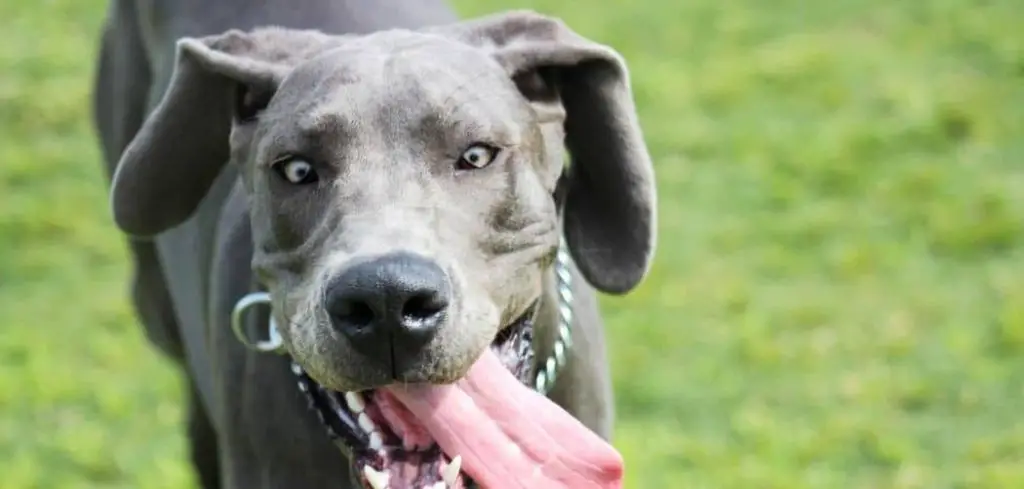When your dog suddenly starts walking in an unusual or awkward manner and also refuses food, it can be a sign of a deeper health concern. These symptoms may point to pain, neurological problems, or internal illness.
We outline the common causes of a dog walking funny and not eating, what you can do at home, and when to seek veterinary help.
Dog Walking Funny and Not Eating — Why It Happens
A dog that is walking strangely and not eating is often dealing with pain, injury, or a systemic illness. It may stem from neurological conditions, joint or muscle pain, toxin exposure, or gastrointestinal distress.
In some cases, behavioral changes like anxiety or fear can cause both odd walking and appetite loss.
These signs shouldn’t be ignored, as they can signal urgent medical issues, especially if they come on suddenly.

Dog Walking Funny and Not Eating: Common Causes
Neurological Disorders
Conditions such as vestibular disease, intervertebral disc disease (IVDD), or seizures can cause your dog to walk unsteadily, tilt their head, circle, or appear drunk.
These issues affect the brain or spinal cord, leading to poor coordination, confusion, and appetite loss.
A dog with a neurological issue may also vomit or seem disoriented, which can further discourage eating.
Any sudden loss of balance, accompanied by not eating, is a serious sign.
Pain or Injury
Musculoskeletal injuries like sprains, joint inflammation (arthritis), or a slipped disc can cause your dog to walk stiffly, limp, or favor one side.
Painful movement often leads to a loss of appetite. Dogs in pain may also hide, become irritable, or refuse to walk entirely.
If your dog yelps when touched or avoids stairs, injury or joint issues could be to blame.
Older dogs are especially prone to arthritis-related mobility issues that impact eating.
Read more: Dog Suddenly Limping and Not Eating (Could it be more than a sprain?)
Gastrointestinal Illness
When the digestive system is upset—from infections, inflammation, or obstructions—your dog may walk slowly or arch their back to relieve discomfort.
This can make their walking pattern look strange. At the same time, nausea or stomach pain will reduce their desire to eat. You might also notice vomiting, diarrhea, or drooling.
A blocked intestine is a medical emergency and can cause both odd posture and anorexia.
Toxic Ingestion
Some toxins or poisonous plants can damage the nervous system or gastrointestinal tract.
Your dog may suddenly appear weak, have tremors, stagger when walking, or collapse. They will usually stop eating entirely. Chocolate, xylitol, grapes, or certain medications are common culprits.
If symptoms follow a walk or unsupervised time outdoors, toxin ingestion should be suspected.
Anxiety or Stress
Behavioral stress, phobias, or anxiety from loud noises, environmental changes, or pain can manifest in odd physical behaviors.
Dogs may pace, freeze, or walk in an unnatural way while refusing food. A dog that is trembling, panting, or hiding may also show these symptoms.
While less common than physical causes, anxiety-driven behavior can still lead to serious eating issues.
What to Do If Your Dog Is Walking Funny and Not Eating
First, limit your dog’s activity and keep them in a quiet, safe space where you can observe them closely.
Check for signs of pain by gently feeling their legs, back, and abdomen. If they flinch, growl, or yelp, stop immediately. Offer a bland diet like boiled chicken and rice, but do not force-feed.
If your dog recently had access to unfamiliar plants, foods, or medications, note the timing and call your vet right away.
Keep them hydrated by encouraging small sips of water or using an oral syringe if necessary.
Avoid giving any human painkillers or medications unless instructed by your veterinarian.
When to Call or Visit Your Vet
Seek veterinary care right away if your dog:
Has sudden weakness or collapses
Cannot stand or keeps falling over
Is vomiting or has diarrhea alongside these symptoms
Is very lethargic or unresponsive
Shows signs of severe pain (whining, yelping, or aggression when touched)
Refuses food or water for more than 24 hours
These symptoms can indicate a serious neurological event, internal illness, or injury requiring diagnostics like x-rays, blood tests, or imaging.
Read more: Dog Trembling and Not Eating (What these symptoms mean)
Key Takeaway
When your dog is walking funny and not eating, it’s often more than just a passing issue.
These signs can signal pain, injury, or something deeper like a neurological problem or toxin exposure.
Always monitor your dog closely and don’t wait too long to seek help if they’re refusing food or showing troubling changes in movement.
Trust your instincts—if something seems off, your vet can help you get to the bottom of it.
